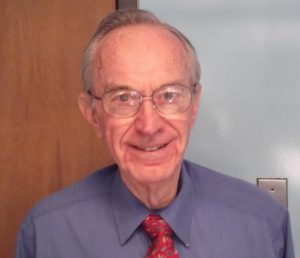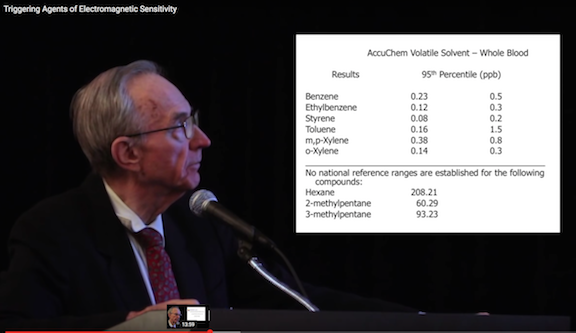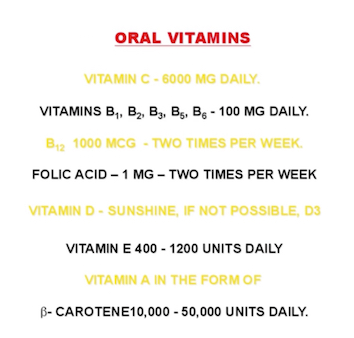
Errors in diagnosis and treatment of diseases are common in physicians ignoring the principles of environmental medicine. They should be aware that various tests developed since the early 1980s "take the guess work out of the diagnosis" of chemical and electrical and electromagnetic hypersensitivity, writes Dr William J. Rea in a new paper published in Reviews on Environmental Health1. A practising physician for 53 years, the American allergist, immunologist and thoracic surgeon has performed such tests on more than 30,000 patients in the last 35 years at the Environmental Health Center-Dallas (EHCD) he founded and still heads in Texas. These tests must be performed in controlled environments where the levels of biological, chemical and electromagnetic pollution has been reduced to a minimum using notably air filters, inert construction materials and copper shielding.
While food intolerance was first described by Hippocrates more than 2,000 years ago, microwave illness (known today as electromagnetic hypersensitivity) was only first described in 1932 by Dr Erwin Schliephake who diagnosed patients overexposed to AM radiofrequencies; and American allergist Theron Randolph first described chemical hypersensitivity in 1962 based on tests performed in a controlled environment.

Dr Rea's article explains principles such as total body pollutant load and masking of sensitivities by the general adaptation syndrome first described by University of Montreal endocrinologist Hans Selye, the first scientist to demonstrate the existence of biological stress. Biochemical individuality, the switch phenomenon (symptom variation), bipolar responses, spreading reactions to other organs, and nerve as well as head injury leading to hypersensitivity are the other principles discussed. Out of up to 3,000 psychological profiles performed by psychologists Butler and Didriksen at the University of North Texas on chemically sensitive patients, about "2,000 showed brain injury, not psychological conditions".
Buildings and rooms free of offgassing materials and electromagnetic fields (EMFs) are key to diagnosing and treating environmental hypersensitivities. "Clean living accounts for 60-75% of treatment", writes Dr Rea. At a conference on environmental hypersensitivities last year in Brussels, he once saw a patient return to the EHCD two decades after he had successfully treated her: "She got cocky and returned to her old toxic lifestyle."

He explains in the article abstract: "The clinician has to use less-polluted water and organic food with individual challenges for testing, including dust, mold, pesticide, natural gas, formaldehyde, particulates, and EMF testing, which needs to be performed in less-polluted copper-screened rooms. The challenge tests for proof of chemical sensitivity include inhaled toxics within a clean booth that is chemical- and particulate-free at ambient doses in parts per million (ppm) or parts per billion (ppb). Individual foods, both organic and commercial (that are contaminated with herbicides and pesticides), are used orally. Water testing and intradermal testing are performed in a less-polluted, controlled environment. These include specific dose injections of molds, dust, and pollen that are preservative-free, individual organic foods, and individual chemicals, i.e. methane, ethane, propane, butane, hexane, formaldehyde, ethanol, car exhaust, jet fuel exhaust, and prosthetic implants (metal plates, pacemakers, mesh, etc.). Normal saline is used as a placebo. EMF testing is performed in a copper-screened room using a frequency generator. In our experience, 80% of the EMF-sensitive patients had chemical sensitivity when studied under less-polluted conditions for particulates, controlled natural gas, pesticides, and chemicals like formaldehyde."

Besides blood and urine analysis, Dr Rea and other members of the American Academy of Environmental Medicine perform various other tests: brain SPECT scans detecting brain toxicity, heart rate variability and pupillography measuring autonomic nervous system disturbances, infrared thermography, nutrient levels showing abnormal detoxification mechanisms, various immune modulation tests and breath analysis.
This article should be read by all physicians and health care practitioners.
1. History of chemical sensitivity and diagnosis, Rev Environ Health 2016, DOI: 10.1515/reveh-2015-0021
Review by André Fauteux, Editor of La Maison du 21e siècle (21st-century Housing) magazine



